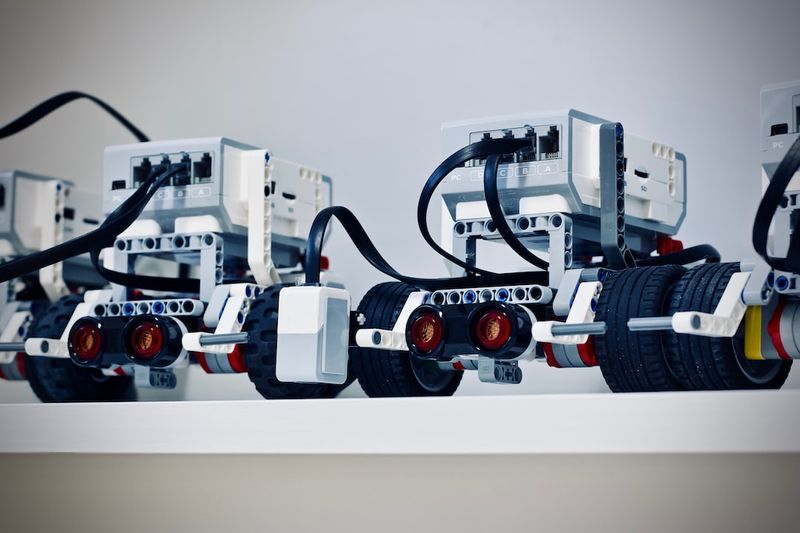New Cyber Algorithm Shuts Down Malicious Robotic Attack
Introduction
In a groundbreaking development, Australian researchers have designed an algorithm that can intercept and neutralize a man-in-the-middle (MitM) cyberattack on unmanned military robots within seconds. This algorithm, developed by experts from Charles Sturt University and the University of South Australia (UniSA), utilizes deep learning neural networks to mimic the behavior of the human brain. By training the robot’s operating system to recognize the signature of a MitM eavesdropping cyberattack, the algorithm has achieved a success rate of 99% in preventing such attacks on a replica of a United States army combat ground vehicle. The research results, published in IEEE Transactions on Dependable and Secure Computing, highlight the effectiveness of this innovative approach.
The Vulnerability of Robot Operating Systems
The researchers’ focus on securing unmanned military robots is driven by the increasing reliance on robotics, automation, and the Internet of Things (IoT) in modern warfare and industrial operations. As Prof. Anthony Finn, an autonomous systems researcher from UniSA, points out, the collaborative nature of these systems demands extensive communication between sensors, actuators, and controllers via cloud services. However, this interconnectedness also exposes the robot operating system (ROS) to potential cyberattacks, with attackers seizing the opportunity to interrupt conversations and data transfers.
Advancements in Computing and Artificial Intelligence
While the susceptibility of ROS to cybersecurity threats is a concern, Prof. Finn and Dr. Fendy Santoso, from Charles Sturt Artificial Intelligence and Cyber Futures Institute, offer optimism for safeguarding these systems. They highlight the exponential growth in computing power, which has made it feasible to develop sophisticated AI algorithms capable of defending against digital attacks. Building upon the benefits of deep learning, their intrusion detection framework proves to be robust and highly accurate, making it suitable for securing large-scale and real-time data-driven systems like ROS.
The Role of Deep Learning Convolutional Neural Networks
Deep learning convolutional neural networks play a crucial role in the success of the algorithm designed by the researchers. By leveraging the capabilities of neural networks, the algorithm can effectively detect and thwart malicious cyberattacks. Dr. Santoso emphasizes that this intrusion detection approach is not limited to ground robots; they plan to test its effectiveness on more complex robotic platforms, such as drones.
Implications and Recommendations
The successful development of an algorithm capable of shutting down malicious robotic attacks represents a significant advancement in robotics cybersecurity. As the adoption of robots and automation proliferates in various industries, including defense, manufacturing, and healthcare, it becomes imperative to prioritize the security and integrity of these systems. The research conducted by Prof. Finn and Dr. Santoso serves as a crucial step towards achieving this goal.
Rethinking Security in Robotics and Automation
The findings of this study indicate that security concerns surrounding robot operating systems cannot be ignored, given their vulnerability to cyber intrusions. The collaboration between academia and organizations like the US Army Futures Command highlights the importance of interdisciplinary efforts in addressing cybersecurity challenges. It is essential for researchers, policymakers, and industry stakeholders to recognize the significance of securing advanced robotic systems and ensure that security measures are integrated into the development process.
Collaborative Efforts and Information Sharing
The development of robust algorithms and intrusion detection frameworks should not be confined to individual research teams or institutions. Instead, it should be a collective and collaborative endeavor involving industry leaders, academics, and cybersecurity experts. Sharing knowledge and best practices among these stakeholders will enable the establishment of comprehensive and effective cybersecurity protocols.
Investing in Research and Development
Given the continually evolving nature of cyber threats, it is crucial to invest in research and development to stay ahead of potential attackers. Governments, private-sector companies, and research institutions should allocate resources to advance the field of robotics cybersecurity, fostering innovation and driving the development of cutting-edge defense mechanisms against cyberattacks.
Increasing Awareness and Training
As robotics and automation become more prevalent in society, it is essential to raise awareness about the potential risks and vulnerabilities associated with these technologies. Training programs should be developed and implemented to educate users, operators, and developers about best practices in robotics cybersecurity. By promoting a culture of security, individuals can play an active role in safeguarding advanced robotic systems.
In conclusion, the development of an algorithm capable of intercepting and neutralizing malicious robotic attacks represents a significant advancement in robotics cybersecurity. The use of deep learning convolutional neural networks has proven to be an effective approach to detect and mitigate cyber intrusions. However, it is crucial for stakeholders in the robotics and automation industry to prioritize security and collaborate on developing comprehensive defense mechanisms. By investing in research, knowledge sharing, and promoting awareness and training, we can ensure the integrity and reliability of advanced robotic systems in the face of evolving cyber threats.

<< photo by Jelleke Vanooteghem >>
The image is for illustrative purposes only and does not depict the actual situation.
You might want to read !
- Rising Wave of AvosLocker Ransomware Threatens Critical Infrastructure
- Blindsided by a Cyber Siege: Unraveling the Unprecedented Scale of the Largest-ever DDoS Attack
- Trend Micro’s Channel Empowerment Initiative Fuels Growth and Collaboration
- DinodasRAT Custom Backdoor Unveiled in Widespread Cyber Operation
- DigiCert’s Groundbreaking Blockchain-Based Solution Unveils Full Scope of Cryptographic Assets
- The Illusion of Autonomous Safety: Unveiling the Vulnerabilities in Self-Driving Cars
- Securing the Future: Gem Raises $23 Million in Series A Funding
- “Securing the Future: Google’s Quantum-Resistant Security Key Implementation”
- Securing the Future: Nile Raises $175 Million to Revolutionize NaaS Solutions




